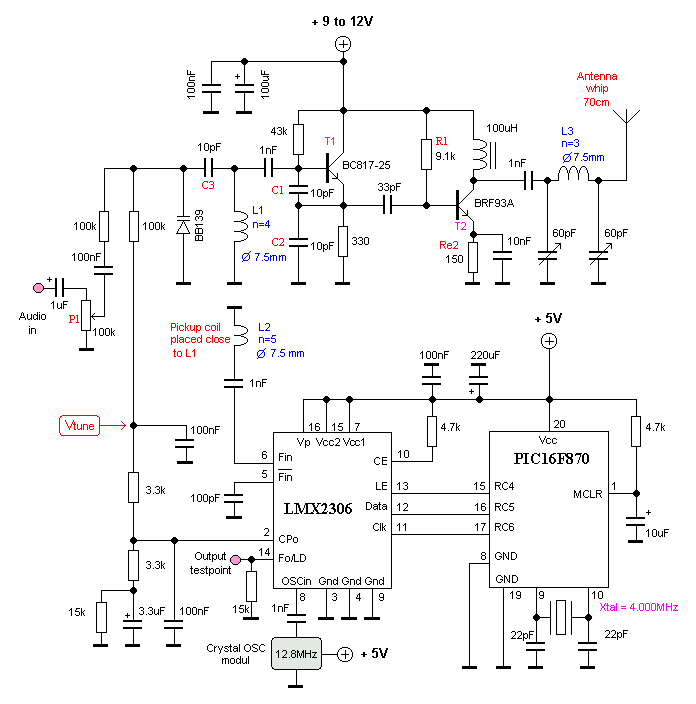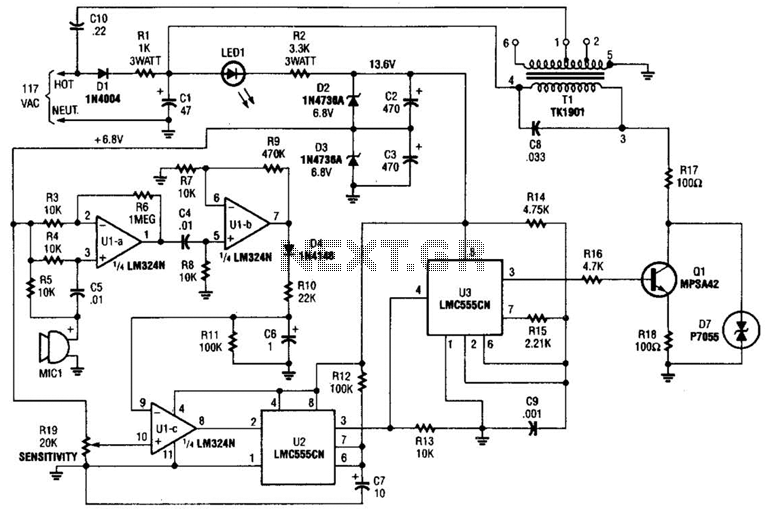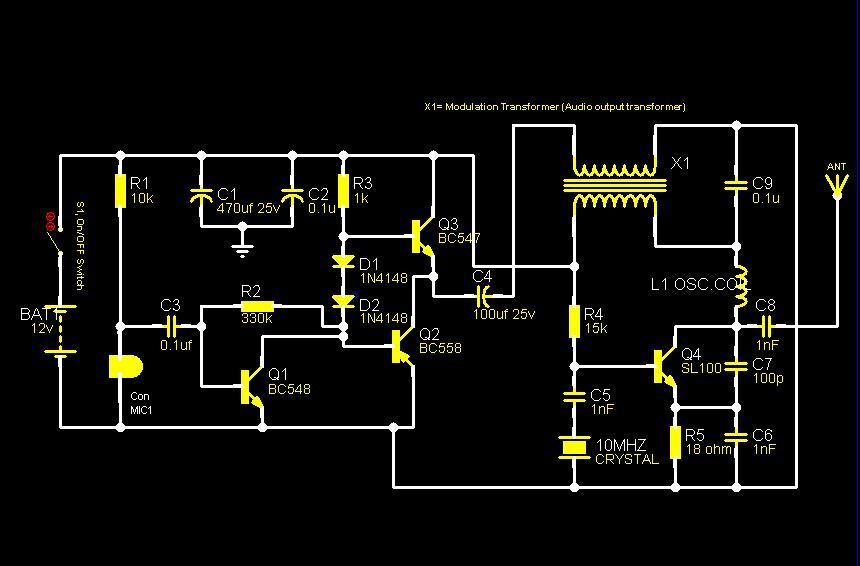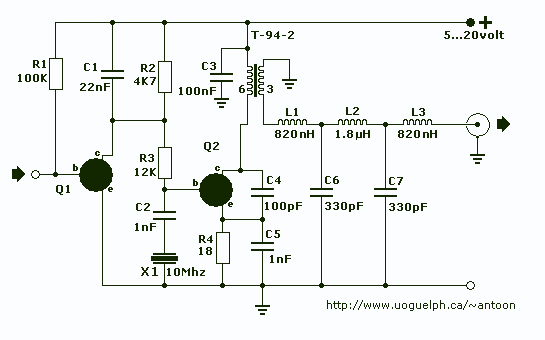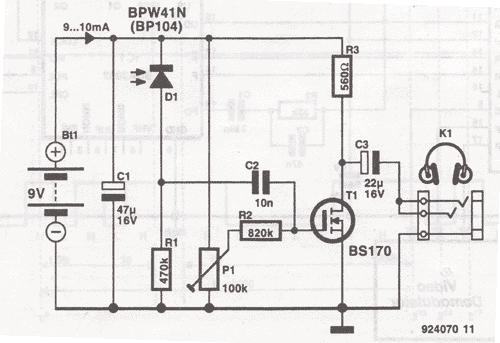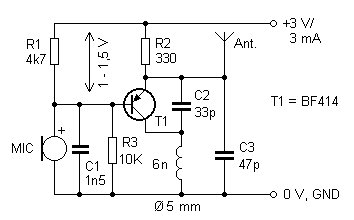
UPC1651 FM Transmitter

This FM transmitter is built with UPC1651, which is a silicon monolithic integrated circuit specifically designed as a wideband amplifier covering the HF band.
The UPC1651 is a versatile integrated circuit that serves as a key component in FM transmitter designs, particularly in the high-frequency (HF) range. This IC is engineered to provide excellent amplification characteristics, making it suitable for applications requiring wide bandwidth and high linearity.
In a typical FM transmitter circuit utilizing the UPC1651, the configuration may include an input stage for modulating audio signals onto a carrier frequency. The circuit often comprises additional components such as resistors, capacitors, and inductors, which are used to set the operating frequency and to filter unwanted harmonics.
The UPC1651 operates efficiently within the HF band, typically from 3 MHz to 30 MHz, allowing it to accommodate various broadcasting needs. The design may include a feedback mechanism to stabilize the gain and improve linearity, ensuring that the transmitted signal maintains fidelity and clarity.
Power supply considerations are crucial in the design, as the UPC1651 requires a stable voltage source to function optimally. Bypass capacitors are commonly employed to filter out noise from the power supply, enhancing the overall performance of the transmitter.
In summary, the UPC1651 FM transmitter circuit is an effective solution for high-quality audio broadcasting within the HF band, leveraging the capabilities of a specialized silicon monolithic integrated circuit for enhanced performance.This fm transmitter is build with UPC1651 which is a silicon monolithic integrated circuit especially designed as a wide band amplifier covering the HF ban.. 🔗 External reference
The UPC1651 is a versatile integrated circuit that serves as a key component in FM transmitter designs, particularly in the high-frequency (HF) range. This IC is engineered to provide excellent amplification characteristics, making it suitable for applications requiring wide bandwidth and high linearity.
In a typical FM transmitter circuit utilizing the UPC1651, the configuration may include an input stage for modulating audio signals onto a carrier frequency. The circuit often comprises additional components such as resistors, capacitors, and inductors, which are used to set the operating frequency and to filter unwanted harmonics.
The UPC1651 operates efficiently within the HF band, typically from 3 MHz to 30 MHz, allowing it to accommodate various broadcasting needs. The design may include a feedback mechanism to stabilize the gain and improve linearity, ensuring that the transmitted signal maintains fidelity and clarity.
Power supply considerations are crucial in the design, as the UPC1651 requires a stable voltage source to function optimally. Bypass capacitors are commonly employed to filter out noise from the power supply, enhancing the overall performance of the transmitter.
In summary, the UPC1651 FM transmitter circuit is an effective solution for high-quality audio broadcasting within the HF band, leveraging the capabilities of a specialized silicon monolithic integrated circuit for enhanced performance.This fm transmitter is build with UPC1651 which is a silicon monolithic integrated circuit especially designed as a wide band amplifier covering the HF ban.. 🔗 External reference
